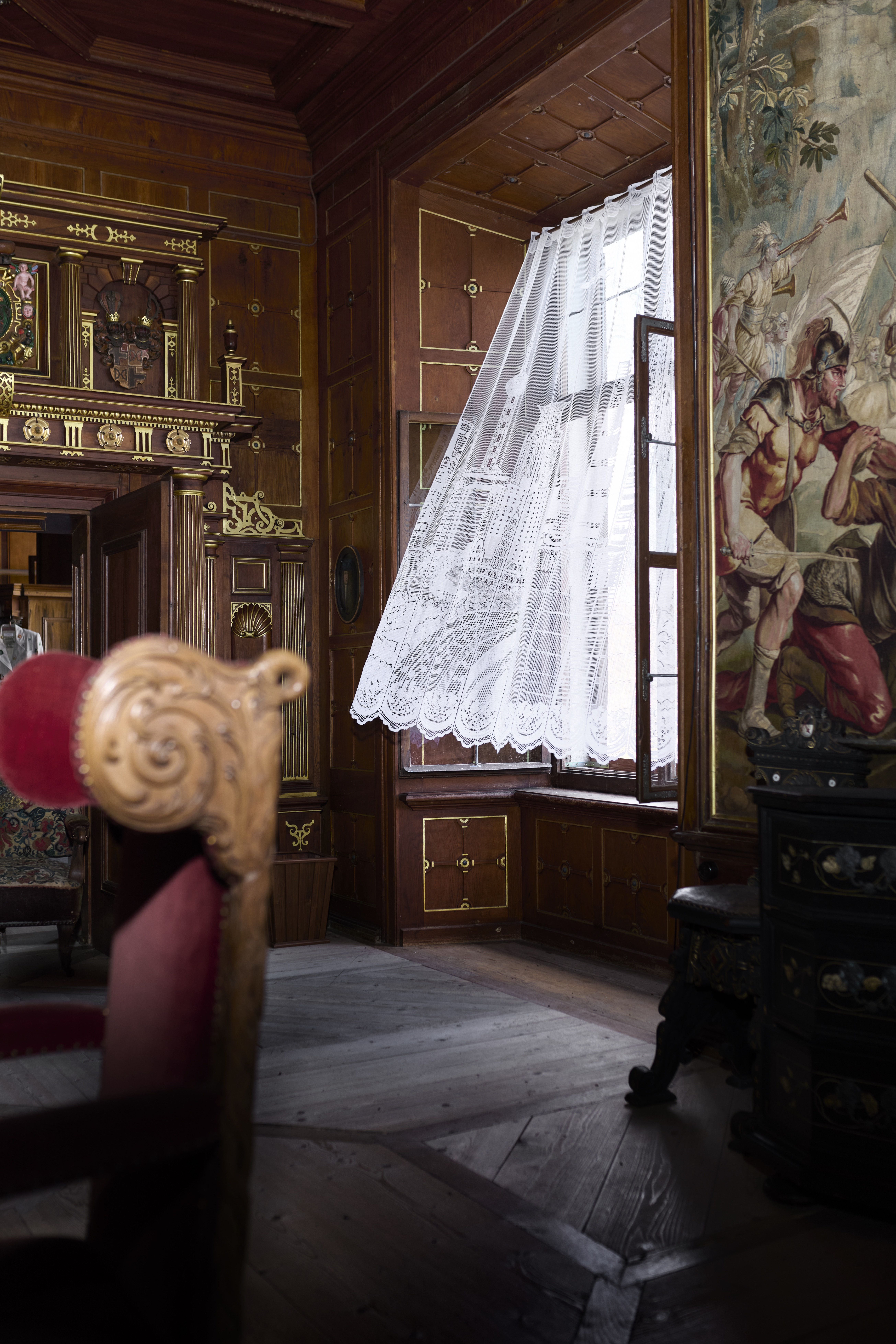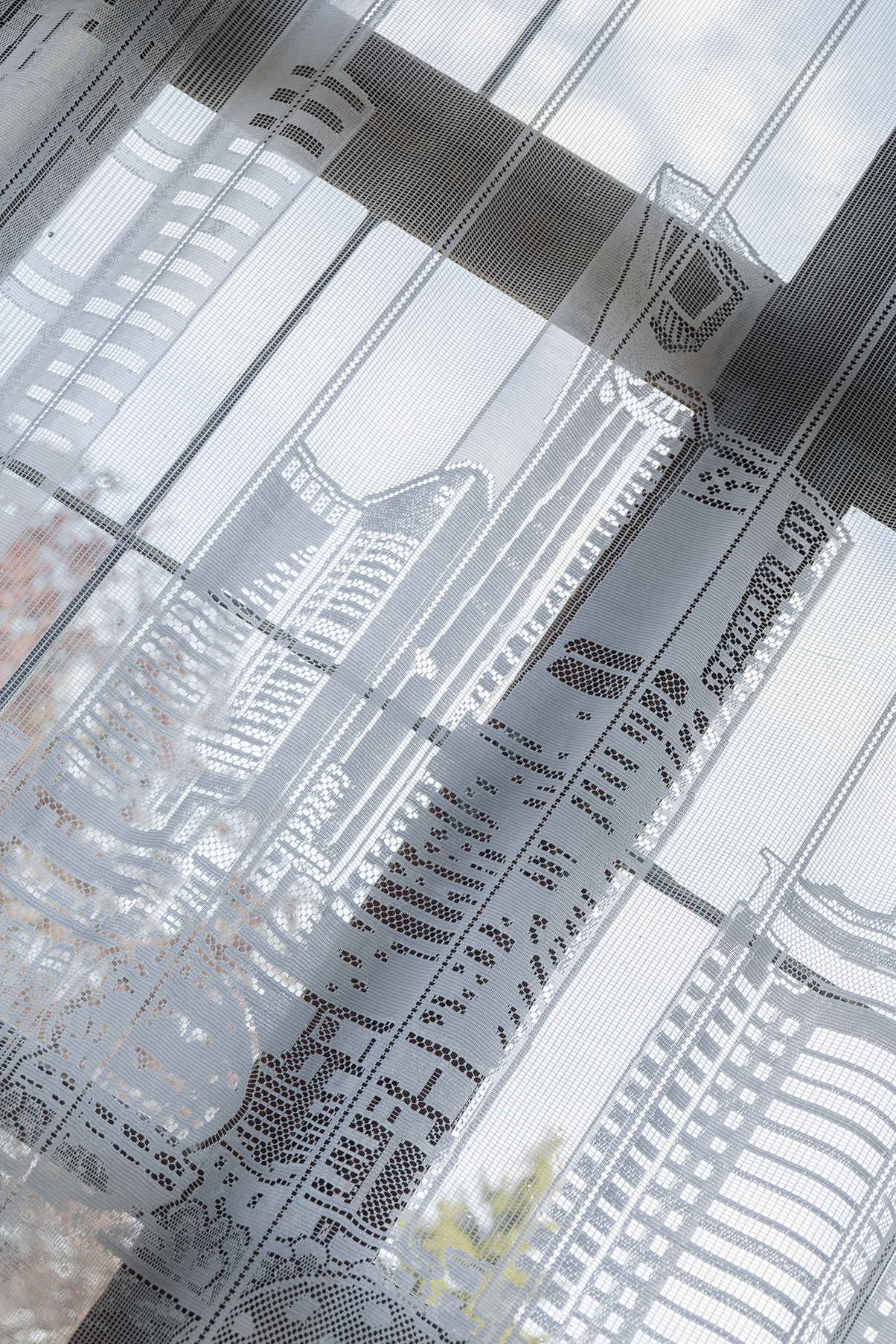Raschel’s Fantasy
Through lace curtains, Raschel’s Fantasy captures an uncanny skyline in the context of hyper-globalized megacities. By drawing on their cottage-like aesthetic, the work exposes the anachrony of these mass-produced objects, revealing them as both cultural remnants and metaphors for Today’s ultimate aspiration.
Installed in the context of Schloss Hollenegg, the piece invites viewers to reflect on themes of heritage, nostalgia, and the tension between utility and ornamentation. It transforms the act of looking—both inward and outward—into a dialogue between tradition and modernity, the local and the global.
Historically, lace curtains, technically known as Raschel curtains, embody the evolution of regional heritage and its transformation through global industrialization. Traded since the 17th century, lace symbolized the dominance of European production centers, asserting cultural and economic power on the world stage.
As industrialization advanced, lace became one of the first post-industrial textiles to be protected through labeling practices, reinforcing the leadership of England, Belgium, and France. By the 1960s, however, its production shifted beyond Europe, predominantly to China, unifying its once-regional identity under the forces of globalization. What was once a marker of power and sophistication became a mass-produced, nostalgic token of a bygone era.
Through its recontextualization, Raschel’s Fantasy prompts a rethinking of these seemingly mundane objects, revealing them as windows into complex histories and contemporary narratives.




